When planting green onions in your garden, it is essential that you stop and consider what will grow well next to the onions. After all, certain plants will benefit your green onions. These are called companion plants.
Moreover, the right kind of companion plants can even help to boost the flavor and health of the green onions, making them tastier and more nutritious.
Overall, some of the best companion plants to consider when cultivating green onions include other alliums family plants, carrots, chamomile, dill, marigolds, and more.
Continue reading to learn more about green onion companion plants, including what the top 10 best green onion companion plants are, and more.
What Are Considered the Top 10 Best Green Onion Companion Plants?
Learn more about companion plants:
- Japanese Forest Grass Companion Plants
- Brussels Sprouts Companion Plants
- Yarrow Companion Plants to Add to Your Garden
1. Allium Family Plants

Of course, the first option to consider is to cultivate your onions with other allium plants. One advantage of this is that you can more easily cycle your crops.
Even when using crop rotation, though, onions and other alliums shouldn’t be grown in isolation. They should never be used in isolation as a monoculture; rather, you should think about utilizing them in rotation with other plant family groupings.
Overall, decorative onions, commonly referred to as alliums, are among the most exquisite flowering bulbs for the spring and summer garden. After all, these well-liked types will reward you with gorgeous blooms that resemble pyrotechnics that have been frozen in time.
2. Carrots
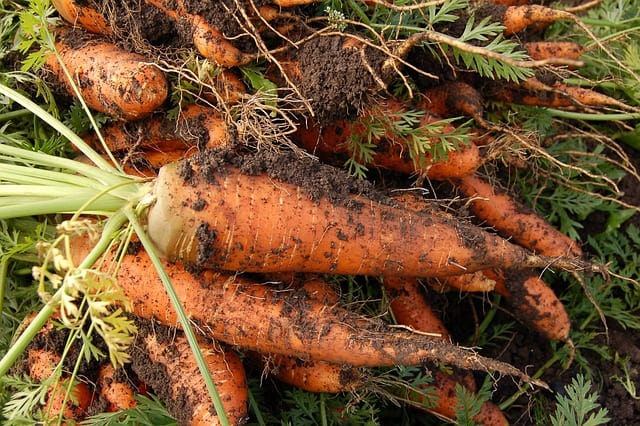
Consider planting carrots in your vegetable garden if you’re searching for a fun plant to grow. After all, carrots are a simple and low-maintenance alternative for home gardeners, whether you’re new to gardening and keen to test the waters or you’ve shown your green thumb season after season.
Take note, however, that this common root vegetable is far more complex than first appears. For example, the ancient Greeks and Romans thought that carrot plants had aphrodisiac properties and could guard against poisoning.
Carrots and onions also go along quite well when interplanted. This typical pairing of companion plants is mostly for pest management. For example, while the carrots can assist lessen issues with onion flies, the onions help repel or confuse carrot flies.
Additionally, mint is another herb that you can grow with your carrots in order to ward off carrot flies. Although there is no evidence to support this, it is believed that the strong aroma of this plant and alliums deters flies.
3. Chamomile
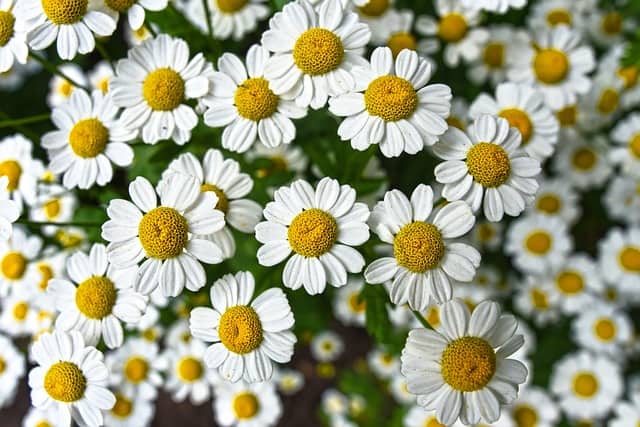
A blooming plant belonging to the daisy family is chamomile. When cultivated close by, chamomile is one of the herbs that is supposed to improve the flavor and development of onions. Additionally, when you grow this plant naturally, you can also use it for different herbal medicines and remedies.
Overall, chamomile can enhance the flavor and development of onions, another partner crop, when it is grown close by. Ladybugs, hoverflies, and other helpful insects are also attracted to chamomile. Furthermore, this plant is also known to have a mosquito-repelling aroma.
4. Dill
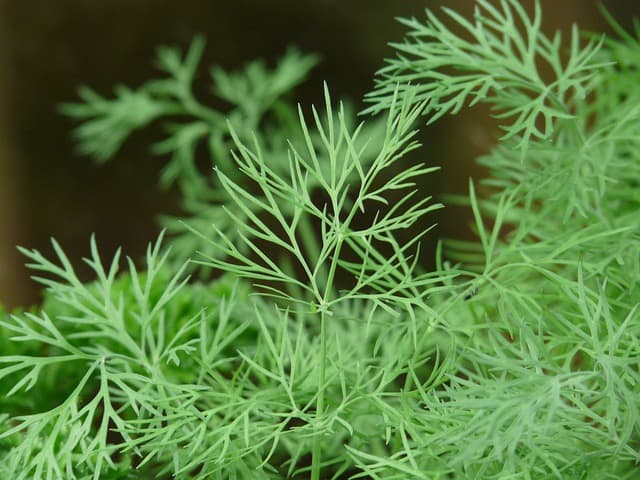
Another common herb that is said to help onions grow and taste better is dill. Of course, it’s also a fantastic culinary herb that you can use in your kitchen in a variety of various ways.
For example, when planted close to your green onions, dill can help lessen the number of Japanese beetles and aphids that eat onions. Pests that eat dill can be repelled by onion while pollinators are drawn to it.
Additionally, hoverflies, ladybugs, praying mantises, bees, butterflies, and parasitic wasps are all attracted to this intriguing plant.
Overall, The herbaceous plant dill produces seeds, leaves, and flowers. Both the seeds and the leaves are edible, although each has a distinct flavor.
5. Marigolds
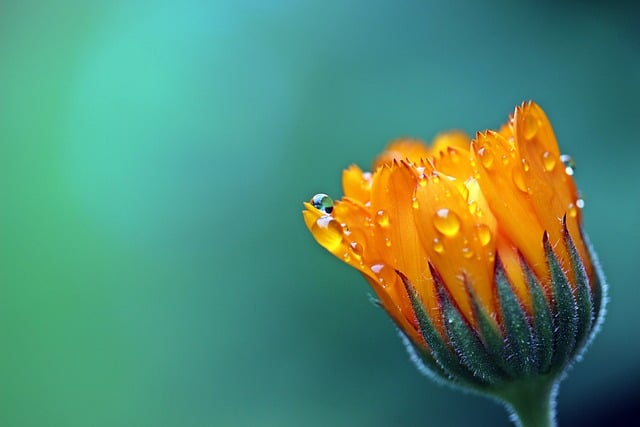
The blooms of the marigold plant are considered extravagant, filling your summer and fall gardens with a bounty of gold, copper, and brass. In addition to their amazing appearance, Marigolds also aid in controlling nematodes in the soil. This can help to defend onions against nematode infestation.
Marigolds are also drought-resistant plants that do well in hot, sunny conditions- making them excellent green onion companions. They don’t care much about the type of soil, but it must be well-drained. In addition, keep in mind that these plants come in a variety of sizes.
One of the main advantages of these plants is that while marigolds can be planted with flowers of a similar colour, gardeners can also pick plants with different hues. For instance, marigolds that are orange and yellow complement blue and purple blooms.
6. Roses

Many roses are grown for their lovely blossoms, which range in color from white through different shades of yellow and pink to dark red and maroon. The majority of these flowers have a great aroma, which varies depending on the type and the climate.
The saying “roses love onions” is well-known. After all, it’s true that members of the alliums family, including green onions, chives, and culinary onions, are said to enhance roses’ fragrance, fend off aphids, and shield plants against black spots.
Additionally, aphids and other sap-sucking pests can have a serious negative impact on roses and other ornamental plants. As a result, planting onions nearby can be somewhat effective in fending off these pests.
Overall, roses are known as beautiful standalone plants in any setting, but occasionally you might wish to freshen things up. By pairing your roses and green onions, you can not only benefit each plant individually but also create a visually appealing garden with many different textures.
7. Parsley
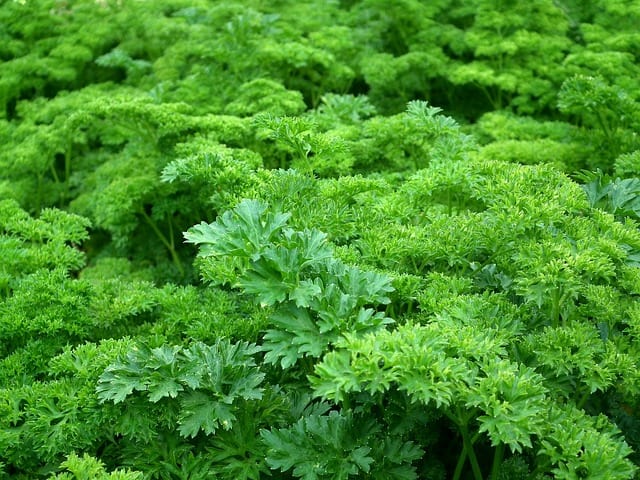
Carrots and parsley are quite similar in many ways. For example, the benefits of growing parsley and onions together are thus similar to those of growing carrots and onions together in many cases.
Parsley is also frequently used in dishes and beverages as a garnish, condiment, food, and flavoring- making it an excellent addition to most gardens.
Overall, the parsley plant’s potential as a companion plant is most fulfilled when you let the parsley blossom. Similar to other members of the carrot family, like fennel and parsnip, pollinators (like the black swallowtail butterfly) are also drawn to the blossoms of parsley.
Additionally, the tachinid fly, which feeds on cutworms, sawflies, and cabbage loopers, as well as the braconid wasp, which attacks armyworms, cabbage worms, codling moths, and gypsy moths, are also drawn to the blossoms of parsley.
8. Summer Savory
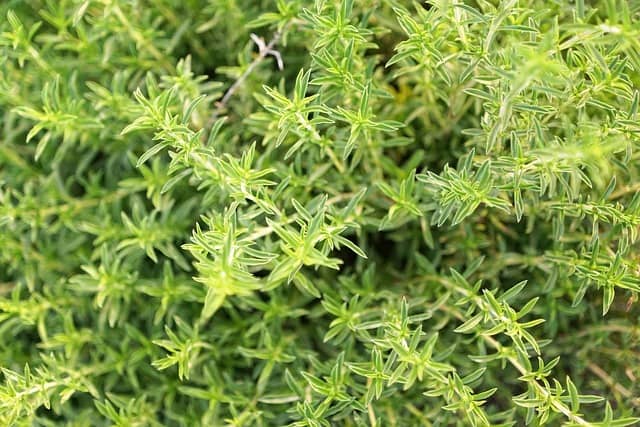
Another herb that can benefit green onions when grown as a companion plant is summer savory. This herb is also said to enhance the flavor and development of your onions.
Summer savory is a perennial herb of the mint family. It is occasionally used as a replacement or in combination with rosemary, thyme, or sage. It’s also considered less harsh than its winter savory cousin, thanks to a peppery flavor.
The plant grows as a short shrub with narrow green leaves. During the summer, the shrub also produces white, lilac, or pink blooms.
Overall, this plant is considered helpful as a companion plant due to the small, tubular blossoms which entice bees and other beneficial insects to the plant.
9. Lettuce

Lettuce is a leafy herbaceous plant that is farmed for its leaves, which are eaten as a salad green. The size, shape, and variety of leaves on the lettuce plant can vary widely, but often the leaves grow in a thick head or loose rosette.
The plant has a short stem with bigger leaves placed at the base and smaller leaves arranged higher up the stem. The smooth or curled leaves are also often red or green in hue.
Lettuce is another excellent companion plant that can help you maximize your time and space by fitting in around other plants in garden beds. For example, when your green onions are still young many gardeners recommend sowing lettuce into the garden bed.
After all, lettuce plants have relatively thin roots and develop their harvest above the earth. However, green onions use the subterranean area to grow their produce. Therefore, in order to make the most of your garden area, it is recommended that you always plant your lettuce and onions near each other.
10. Brassicas
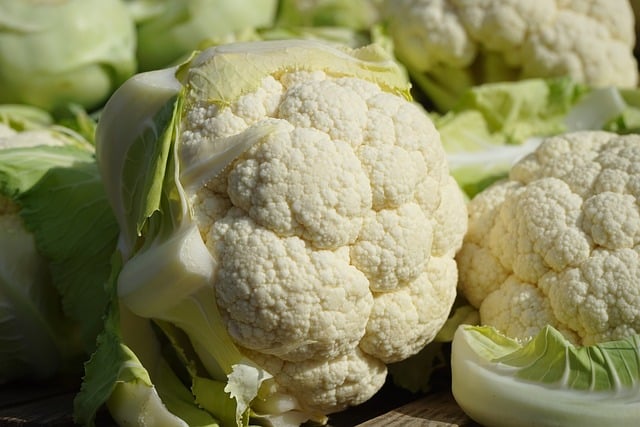
Cover crops made of brassica are renowned for their quick autumn growth, high biomass output, and capacity to scavenge nutrients. However, their potential for serving as a pest management tool is also drawing attention.
Brassicas are a plant family that can benefit greatly from being cultivated with onions. Alliums that are planted alongside members of the brassica, or cabbage plant family, will help repel, confound, or divert a variety of common pests.
Additionally, most species of Brassica can produce chemical substances that are known to also be poisonous to soil-borne diseases and pests such as nematodes, fungi, and certain weeds.

Hey, I’m Lisa and I’ve been an avid gardener for over 30 years. I love writing, talking and living in the garden! Feel free to connect with me on my socials below

